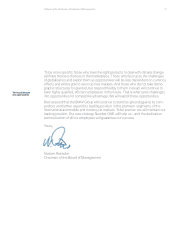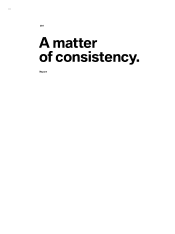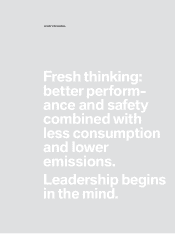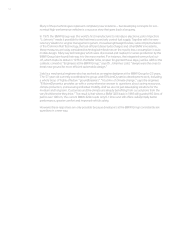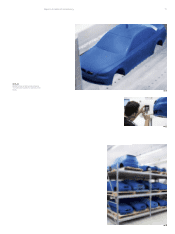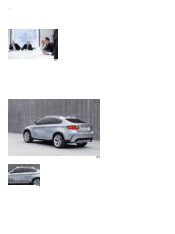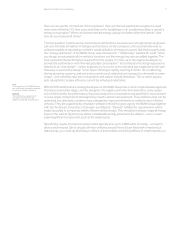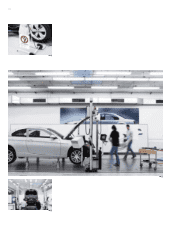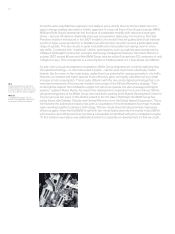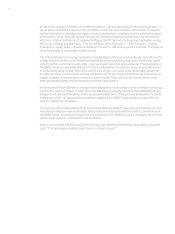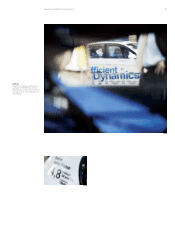BMW 2007 Annual Report Download - page 217
Download and view the complete annual report
Please find page 217 of the 2007 BMW annual report below. You can navigate through the pages in the report by either clicking on the pages listed below, or by using the keyword search tool below to find specific information within the annual report.17
== 1
The engineers of the BMW Group
are continually developing features
to enhance vehicle efficiency.
== 2 – 3
The BMW Group presents its
first fully hybrid vehicle: the
BMW Concept X6 ActiveHybrid.
How can we use the momentum of thrust phases? How can the fuel injected into engines be used
even more efficiently? Or how does switching on the headlamps or air conditioning affect a vehicle’s
energy consumption? Where do further potential energy savings lie hidden within the vehicle? And
how do you measure all of this?
The last question in particular has tremendous ramifications, because even though design engineers
can now simulate all manner of designs and functions on the computer, until recently there was no
software capable of calculating a vehicle’s overall utilisation of energy resources. But that is exactly what
the energy optimisers at the BMW Group were interested in. Traditionally, explains Dr. Liebl, when
you design an automobile all the vehicle’s functions and the energy they use are added together. The
total represents the performance required from the engine. It is then up to the engine developers to
provide this performance with the least possible consumption. In the industry this design approach is
referred to as end of pipe – where engineers try to correct at the end what was neglected at the start.
However, in automotive design end of pipe thinking is rapidly reaching its limits. Air conditioning,
driving dynamics systems, and every extra comfort and safety feature increase the demand for power
output – and ultimately raise fuel consumption and carbon dioxide emissions. This is where physics
sets natural limits: engine efficiency cannot be enhanced indefinitely.
With the EfficientDynamics strategy developers at the BMW Group take a more comprehensive approach
that starts at an earlier stage. Like the designers of a regatta yacht who trim every fibre, every square
inch of their boat for top performance, they now analyse the consumption and potential for improvement
of every single component at the beginning of each vehicle’s development. They optimise what can be
optimised and ultimately combine many substantially improved elements to make far more efficient
vehicles. They are supported by simulation software refined five years ago by the BMW Group together
with the Technical Universities of Dresden and Munich. Dymola fulfilled the requirements which
made it possible to completely rethink efficient vehicle design. This simulation software maps all energy
fluxes in the vehicle. Dymola now allows considerable energy potential to be utilised – even in seem-
ingly insignificant components such as the water pump.
Specifically, regular mechanical water pumps typically lose up to 2,000 watts of energy – enough to
drive a small moped. Since virtually all motor vehicles around the world are fitted with a mechanical
water pump, you could say that today’s millions of automobiles are driving millions of small mopeds, too.
Report: A matter of consistency.



